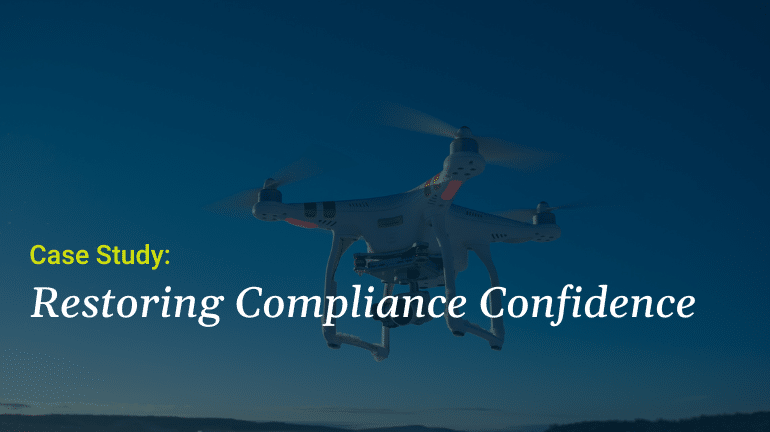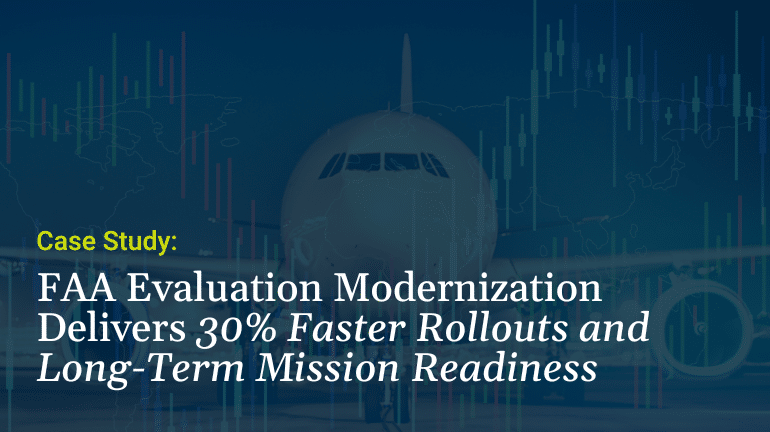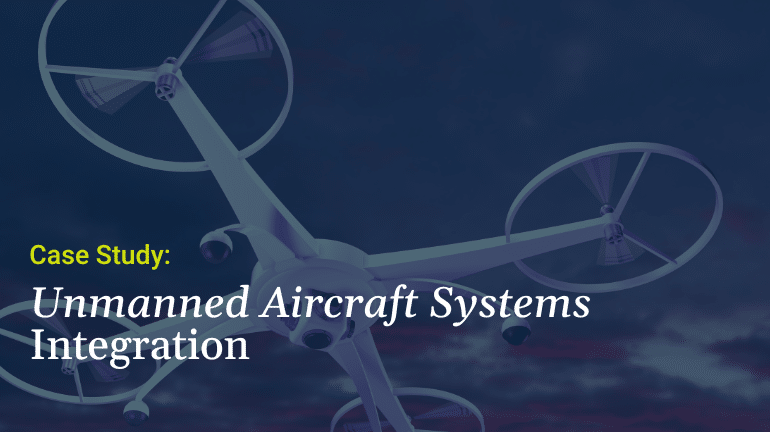FAA Rebuilds Safety Velocity
How Evans Identified 301 Pain Points and Delivered 131 Operational Upgrades in 24 Months

Background
As the FAA’s System Approach for Safety Oversight (SASO) program entered Phase 4 of its phased-development approach, it faced a critical juncture: 301 unresolved pain points — including 48 top-priority blockers — were undermining the Agency’s efficiency in inspection tasks of the National Airspace System (NAS).

The Challenge
Inspection processes weren’t fully integrated. Manual methodologies drained inspector hours. Policy contradictions created confusion and compliance gaps. UAS inspection integration stalled. Fragmented documentation handling threatened institutional memory. And quality concerns provided opportunity to improve safety data integrity.
The mission impact? Slower approvals. Lost momentum in innovation. And increasing pressure on agency staff navigating disconnected tools, potentially redundant inspection actions, and fractured workflows.

The Approach
Evans deployed a business process reengineering (BPR) model designed to eliminate waste, align stakeholders, and deliver decision velocity.
Key Implementation Highlights:
- 159 Stakeholder Sessions – Over 318 hours of facilitated input to capture ground truth
- 495 Pages of As-Is Documentation – Mapping operational reality, not assumptions
- 498 Pages of To-Be Designs – Clear, tactical blueprints to improve operations
- 54 Heat Maps – Visual prioritization of risks, conflicts, and highest-value interventions
- 295 Inspection Insights Refined into 131 Prioritized Recommendations – Aligned with FAA’s mission and regulatory environment
Specialized offsites tackled complex topics like Foreign Air Carrier Inspections and Certificate Holder Risk Profile Enhancement. Cross-functional design teams ensured whole-agency alignment. All 16 deliverables were completed on time or ahead of schedule — without sacrificing depth.

The Results
Mission Improvement
- 92% of Operations Specifications System (OPSS) Functional Needs Met – Enabling operations specifications development with greater speed and precision, creating a foundation for sustainable regulatory oversight.
- 100% of Foreign Carrier Requirements Delivered – Creating a seamless integration of Title 14 CFR Part 129 and DOT 375 oversight processes that bridge international regulatory frameworks with domestic safety standards.
- Enhanced Certificate Holder Risk Profile – Consolidated fragmented safety data into a scalable enterprise visibility system laying the foundation for improved risk-based oversight.
- 82% of UAS Integration Foundations Complete – Establishing the regulatory architecture necessary for modern oversight of unmanned systems within the NAS ecosystem.
ROI Delivered
- High-Priority Quality Pain Points Resolved – Replacing inconsistent processes with standardized frameworks that enhance decision support and reduce operational friction.
- 30 Core Processes Redesigned – Streamlining inspector workflows through human-centered design that balances regulatory rigor with practical field application.
- 34 Role Clarity Issues Fixed – Creating transparent accountability structures that reduce role ambiguity and establish clear ownership of critical safety functions.
- 6 New Coordination Protocols Introduced – Connecting previously isolated operational domains through strategic information bridges that eliminate organizational blind spots.
Improvements Made
- Documentation Streamlined – Converting redundant data entry and paper-based processes into digital frameworks that capture essential information while eliminating administrative burden.
- Inspection Processes Optimized – Redesigning field activities to balance thorough regulatory oversight with operational efficiency through structured, adaptive approaches.
- Institutional Knowledge Secured – Embedding critical expertise into standardized systems that maintain continuity through leadership transitions and organizational evolution.
Future-Proof Solutions
- Scalable Oversight Utility Created – Built a modular inspection infrastructure that accelerates integration of UAS oversight with emerging aviation technologies — advancing FAA’s mission to ensure safety, innovation, and system adaptability across the NAS.
- System Integration Roadmap Delivered – Delivered a unified technical roadmap that aligns with the FAA’s modernization strategy — enabling faster deployment of oversight capabilities, digital tool adoption, and continuous safety assurance.
- Cross-Functional Standardization Within the SASO Program Enabled – Creating a unified approach to program management that accelerates onboarding processes and transforms regulatory complexity into operational clarity.
These outcomes directly support FAA’s strategic priorities: modernizing oversight systems, integrating unmanned aircraft safely, and accelerating innovation without compromising safety. By resolving efficiency impediments and embedding scalable oversight mechanisms, this effort moves the FAA closer to a fully adaptive, risk-informed inspection posture.

The Tradeoff of Not Acting
Without Evans, FAA would still be managing:
- 301 unresolved pain points across critical inspection processes
- 87 persistent quality risks threatening safety assurance
- Manual process overload draining safety inspector time
- Fragmented UAS inspection oversight with lagging scalability to address emerging UAS trends
- Compliance vulnerabilities for foreign carriers navigating inconsistent frameworks





